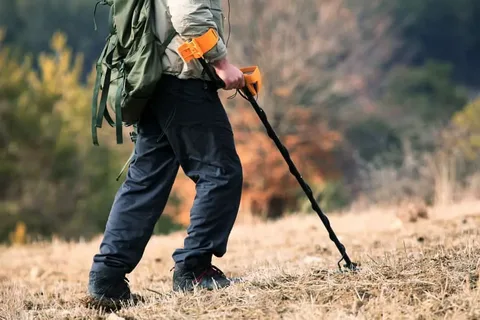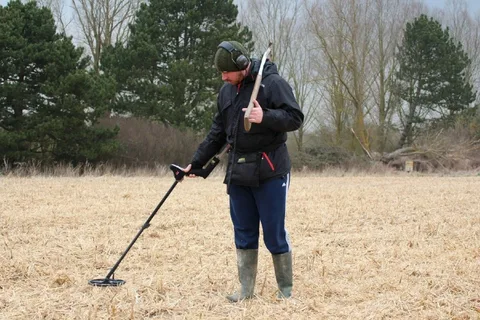Panning Gold Equipment: A Beginner's Guide For those new to the world of gold prospecting, having the right equipment is essential for success. Panning for gold is an exciting and rewarding hobby, but without the proper tools, it can quickly become frustrating. In this article, we will discuss the essential panning gold equipment that beginner prospectors should have in their toolkit. Whether you're hoping to strike it rich or simply enjoy the thrill of the hunt, having the right gear can make all the difference in your prospecting journey.
Essential panning gold equipment for beginner prospectors includes a gold pan, a classifier, a snuffer bottle, and a small shovel or trowel. A gold pan is used to separate gold particles from sediment by swirling the pan in water and allowing the heavier gold to settle to the bottom. A classifier helps to remove larger rocks and debris from the sediment before panning. A snuffer bottle is used to suck up small gold particles without losing them. Lastly, a small shovel or trowel is useful for digging up sediment from stream beds or other areas where gold may be found. These basic tools can help beginners get started in the rewarding hobby of gold prospecting.
The Best Panning Gold Equipment for Beginners

The best panning gold equipment for beginners typically includes a gold pan, a classifier, a snuffer bottle, and a magnifying glass. A gold pan is the most essential tool for gold prospecting, as it is used to separate gold from other sediments. A classifier, which is a simple screen used to remove larger debris, can help beginners focus on the smaller, more valuable materials. A snuffer bottle is used to suck up any small gold flakes, while a magnifying glass can help beginners inspect their findings more closely. These basic tools are easy to use and can help beginners get started with gold panning.
Essential Panning Gold Equipment Every Prospector Should Have

1. Gold pan: This is the most basic and essential piece of equipment for gold prospecting. It is used to separate gold from other sediments by shaking and washing the material in water. 2. Sluice box: A sluice box is a long, narrow box with riffles or ridges on the bottom. It is used to trap gold as the flow of water washes over the material, allowing the heavier gold particles to settle while the lighter material is washed away. 3. Metal detector: A metal detector is a valuable tool for prospectors, as it can help locate gold nuggets or deposits that may not be visible to the naked eye. 4. Classifier: A classifier is a sieve-like device used to separate larger debris from the material being processed, allowing for more efficient panning and sluicing. 5. Snuffer bottle: A snuffer bottle is used to suck up small gold flakes and nuggets from the bottom of a gold pan or sluice box, allowing for easy collection and storage of the valuable material. 6. Gold prospecting shovel: A sturdy shovel is essential for digging and moving large amounts of material while prospecting for gold. 7. Magnet: A magnet can be helpful for removing magnetic black sands, which may contain valuable gold particles, from the material being processed. 8. Gold panning kit: An all-in-one gold panning kit typically includes a gold pan, classifier, snuffer bottle, and other essential accessories for prospecting. These essential pieces of equipment are crucial for any prospector looking to effectively and efficiently search for gold in rivers, streams, and other potential gold-bearing areas.
How to Use Panning Gold Equipment Effectively

To use panning gold equipment effectively, you will first need to find a suitable location with a good amount of sediment in a river or stream. Then, fill your pan with sediment and water and shake it to separate the gold from the other materials. Tilt the pan slightly and swirl the water to allow the gold to settle at the bottom. Continue this process until you are left with mostly gold in the pan. Practice and patience are important in mastering the art of panning for gold. You may also benefit from researching and learning different techniques for gold panning to improve your skills.
Top 5 Panning Gold Equipment for Serious Prospectors

1. Gold Pan - A good quality gold pan is essential for any serious prospector. Look for pans with a combination of riffles, traps, and a flat bottom to effectively capture and retain gold particles. 2. Sluice Box - A sluice box is a long, rectangular box with riffles and matting to catch gold as water passes through. It is an efficient and effective tool for processing large amounts of material in a short amount of time. 3. Gold Classifier - A classifier is used to separate different sizes of materials as you are panning or sluicing. This tool can help you focus on the heavier materials that may contain gold, saving time and effort. 4. Gold Panning Kit - Consider investing in a complete gold panning kit that includes essentials such as a pan, classifier, snuffer bottle, and other accessories. These kits often come with everything needed to start panning right away. 5. Gold Trommel - For serious prospectors with a larger budget and more experience, a gold trommel can greatly increase efficiency by automatically screening and washing materials as you feed them into the machine. This can be a valuable tool for processing larger volumes of material in a shorter time frame.
The Ultimate Guide to Panning Gold Equipment
The Ultimate Guide to Panning Gold Equipment is a comprehensive resource for anyone interested in finding and retrieving gold from natural sources. It covers the various types of equipment needed for gold panning, including pans, classifiers, sluice boxes, and metal detectors. The guide provides detailed information on how to use each piece of equipment effectively, as well as tips and techniques for maximizing your chances of finding gold. Additionally, it includes information on where to find gold, how to identify potential gold-bearing locations, and the proper methods for extracting and processing the gold once it's been found. Whether you're a seasoned prospector or a beginner looking to try your hand at gold panning, this guide has everything you need to get started.
Common Mistakes to Avoid When Using Panning Gold Equipment
1. Using the wrong equipment size: It's important to use the correct size of equipment for the specific type of gold panning you are doing. Using equipment that is too large or too small can result in inefficiency and frustration. 2. Not properly preparing the material: Failing to properly prepare the material before panning can result in missed gold. It's important to remove any large rocks, debris, or organic matter that could hinder the panning process. 3. Overloading the pan: Adding too much material to the pan can make it difficult to effectively separate the gold from the other sediments. It's important to work in small batches to ensure thorough and accurate panning. 4. Using incorrect panning techniques: Proper panning techniques are crucial for successfully capturing gold. This includes proper agitation, swirling, and tilting of the pan to effectively separate the gold from the other sediments. 5. Not properly cleaning and maintaining equipment: Failing to clean and maintain your panning equipment can result in less effective performance. It's important to regularly clean and inspect your equipment to ensure optimal functionality. 6. Ignoring safety precautions: Gold panning involves working with potentially hazardous materials and equipment. It's important to always use proper safety gear and follow safety guidelines to minimize the risk of accidents or injuries.
Innovative Panning Gold Equipment That Will Improve Your Yield
Innovative panning gold equipment includes tools like the spiral gold pan, which uses centrifugal force to separate gold particles from other materials, and the gold cube, a high-tech sluice box system that efficiently captures fine gold and nuggets. These tools can improve your yield by making the panning process more efficient and less time-consuming, ultimately leading to a higher overall yield of gold. Additionally, high-tech metal detectors and electronic gold prospecting equipment can be valuable investments for improving your yield by helping you locate and recover gold more effectively.
Panning Gold Equipment: Traditional vs Modern Tools
Traditional panning gold equipment includes a pan, a classifier or sieve, and a snuffer bottle. These basic tools have been used for centuries to separate gold from gravel and sediment in rivers and streams. Modern tools for panning gold include metal detectors, highbankers, and sluice boxes. Metal detectors can help locate gold nuggets and other valuable metal items, while highbankers and sluice boxes allow for more efficient and thorough gold recovery. Both traditional and modern tools have their own advantages and drawbacks, and some gold prospectors prefer to use a combination of both types of equipment to maximize their chances of finding gold. Ultimately, the choice of panning gold equipment depends on the specific needs and preferences of the individual prospector.
DIY Panning Gold Equipment: Making Your Own Tools
DIY panning gold equipment involves making your own tools for gold panning, such as a gold pan, sluice box, and classifier. This can be done using easily available materials like PVC pipes, metal sheets, and mesh screen. Making your own equipment allows you to customize it to fit your specific needs and budget, and can also be a fun and rewarding DIY project. There are many online resources and tutorials available to guide you through the process of making your own gold panning equipment.
The Pros and Cons of Different Panning Gold Equipment Brands
When it comes to different brands of panning gold equipment, there are a variety of pros and cons to consider. One popular brand, Garrett, is known for its durable and reliable equipment. Their pans and classifiers are well-made and can withstand frequent use. However, some users find that Garrett equipment can be a bit more expensive compared to other brands. Another brand, Minelab, is also well-known in the gold panning community. Their equipment is known for its high sensitivity and can detect even the smallest gold nuggets. On the downside, some users find that Minelab equipment can be complex to use and may require a learning curve. Fisher is another brand that offers a range of panning equipment. Their products are known for their accuracy and ease of use. However, some users find that Fisher equipment may not be as durable as other brands. Ultimately, the best brand for you will depend on your specific needs and budget. It's important to carefully research and compare different brands before making a purchase to ensure you get the best equipment for your gold panning endeavors.
In conclusion, for beginner prospectors, having the essential panning gold equipment is crucial for starting out in the world of gold prospecting. From a reliable gold pan and classifier to a snuffer bottle and vials, these tools are essential for efficiently and effectively extracting gold from riverbeds and streams. With the right panning gold equipment, beginners can kick start their prospecting journey with confidence and excitement.
See also: Find Your Next Gold Detector Online: Top 5 Choices
